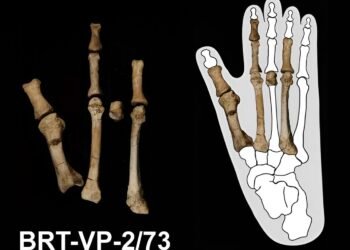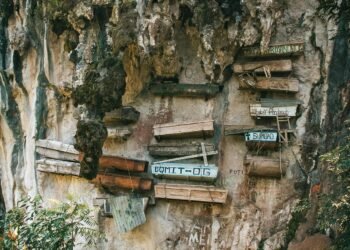A new study has shown strong proof that early humans in the Levant during the Middle Paleolithic era carved geometric shapes onto stone tools. This hints at advanced cognitive abilities and symbolic behavior. The research was led by Dr. Mae Goder-Goldberger of Hebrew University and Ben Gurion University and Dr. João Marreiros of the Monrepos Archaeological Research Center and the University of Algarve, in collaboration with Prof. Erella Hovers (Hebrew University) and Dr. Eduardo Paixão (University of Algarve). The team shared their findings in Archaeological and Anthropological Sciences.

For years, archaeologists have debated whether incised markings on Middle Paleolithic stone tools were intentional or merely the result of functional use and natural wear. Many believed that symbolic thinking and artistic expression emerged only in the final stages of human evolution, specifically with modern Homo sapiens. Yet, this recent work calls that assumption into question by showing that some of these engravings were deliberately created, thus implying an ancient system of symbolic communication.
Using advanced 3D surface analysis, the researchers investigated five engraved artifacts from four sites in the Levant: Manot Cave, Qafzeh Cave, Quneitra, and Amud Cave. This analysis showed a difference between the artifacts from various locations. Artifacts from Manot, Qafzeh, and Quneitra contained well-defined geometric patterns that appeared deliberately structured, aligning with the stone’s natural surface topography. This means that these engravings were made purposefully, probably for something of an aesthetic or symbolic nature. In contrast, the artifacts from Amud Cave showed shallow and irregular incisions, without any pattern. This suggests they were the byproduct of functional use as abraders rather than deliberate engravings.
“Abstract thinking is a cornerstone of human cognitive evolution. The deliberate engravings found on these artifacts highlight the capacity for symbolic expression and suggest a society with advanced conceptual abilities,” Dr. Mae Goder-Goldberger explained.
Dr. João Marreiros also highlighted the methodological breakthrough of the study, explaining, “The methodology we employed not only highlights the intentional nature of these engravings but also provides, for the first time, a comparative framework for studying similar artifacts, enriching our understanding of Middle Paleolithic societies.”
While the engravings of Qafzeh, Quneitra, and Manot seem to be isolated phenomena in their own chronological and geographical contexts, the consistency in their structured patterns suggests a deliberate and repeated action. This finding implies that early humans across these regions may have engaged in some shared cultural tradition related to symbolic representation.
This study represents a decisive step toward understanding the symbolic capabilities of our ancestors. By demonstrating the conscious nature of these engravings, it bridges the gap between mere functional tool use and abstract expression. The fact that these markings were made during the Middle Paleolithic further suggests that symbolic thought emerged much earlier than previously believed.
























Christianity / Catholicism / white religion likes to influence people like convincing people Egyptians were barbaric and dumb and any living being before Jesus’s birth were uncultured mindless heathens.
Instead, humans are a beautiful creature where for way longer than we have had tablets and English, humans built their own cultures and reared their own children. They did this with less accumulated wisdom and with less guidance yet the efforts of early man were good enough to get us to where we are today.
I’m a white Christian and I don’t think that Egyptians were barbaric and stupid. They were advanced for sure. There were intelligent civilizations thousands of years before Jesus. What a negative generalization of christans. Christianity is not a religion it is reality.